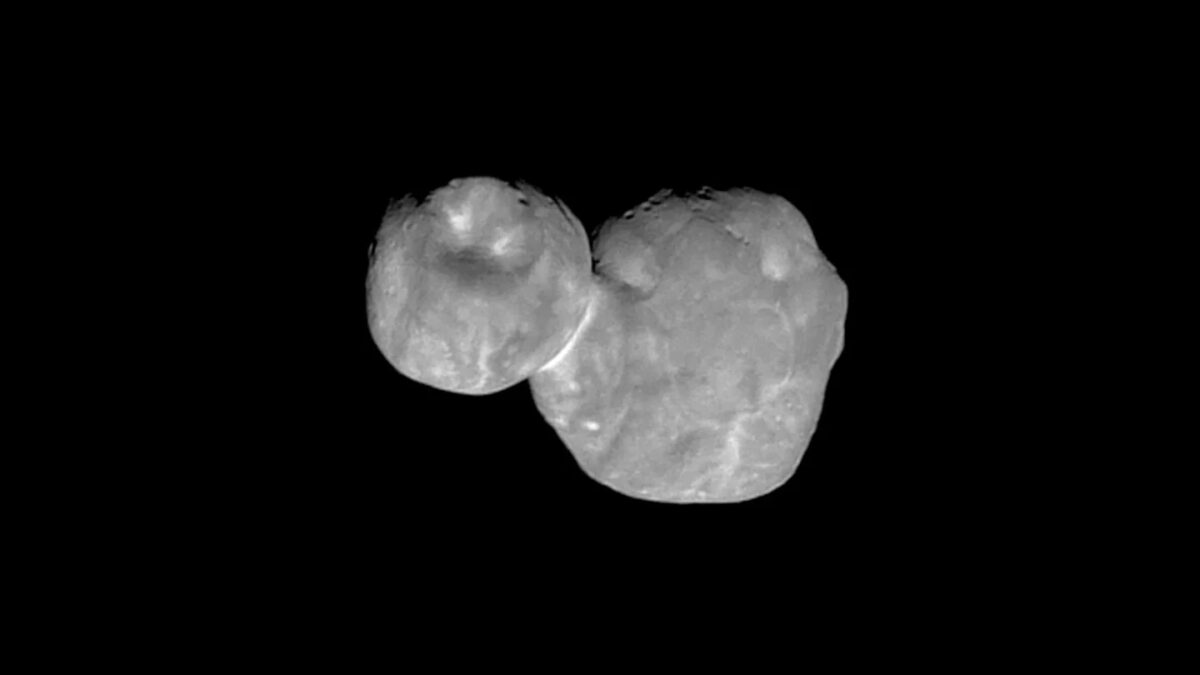
A new study overturns what scientists thought they knew about distant objects in the far reaches of the solar system, starting with an object called the “space snowman.”
Researchers from Brown University and the SETI Institute found this The snowman-like Kuiper Belt object 486958 Arrokoth may have ancient ice stored deep within it since the object first formed billions of years ago. But this is just the beginning of their findings.
Using a new model they developed to study how comets evolve, the researchers suggest that this feat of persistence is not unique to Arrokoth, but rather Many objects from the Kuiper Belt– Which is located in the outer regions of the solar system and dates back to the early formation of the solar system about 4.6 billion years ago – They may also contain ancient ice with which they were formed.
“We’ve shown here in our work, using a fairly simple mathematical model, that you can keep these primordial ices locked deep inside these things for a really long time.”said Sam Birch, a planetary scientist at Brown University and one of the paper’s co-authors. “Most of our community thought these ice sheets should have disappeared long ago, but we now believe that may not be the case.”.
Birch describes the work in the journal Icarus with co-author Orkan Umurhan, a senior researcher at the SETI Institute.
Reevaluating thermal evolutionary models
Until now, Scientists have struggled to understand what happens to the ice in these space rocks over time. The study challenges widely used thermal evolutionary models that fail to explain the longevity of temperature-sensitive ice such as carbon monoxide. The model the researchers created for the study takes this change into account and suggests that the highly volatile ice in these objects remains much longer than previously thought.
“We’re basically saying that Arrokoth is so cold that for more ice to sublimate — or transform directly from solid to gas, bypassing the liquid phase inside — the gas it sublimates into must first move outside through its spongy, porous interior.”“, Birch reported.
“The trick is that for the gas to move, the ice must also sublimate, so what we have is a domino effect: it gets colder inside Arrokoth, less ice evaporates, less gas moves, it gets colder, and so on. Eventually, everything stops… “Work, and you’re left with a body full of gas that slowly leaks out.”
“Ice bombs”
The work suggests that objects in the Kuiper Belt could act as inert “ice bombs,” retaining volatile gas inside them for billions of years until orbital shifts bring them closer to the Sun and heat makes them unstable.
This new idea could explain why these icy objects in the Kuiper Belt explode violently when they first approach the Sun. Suddenly, the cold gas inside them is rapidly compressed and these objects evolve into comets.
“The bottom line is that we have fixed a profound flaw in the physical model that people have assumed for decades about these very cold, very old things.”said O’Morhan, Birch’s co-author on the paper. “This study could be the initial impetus for re-evaluating the theory of internal evolution and cometary activity.”
In total, The study challenges current expectations and opens new horizons for understanding the nature of comets and their origins. Birch and O’Morhan are co-investigators on NASA’s Comet Exploration Astrobiology Sample Return (CAESAR) mission to retrieve at least 80 grams of surface material from Comet 67P/Churyumov-Gerasimenko and return it to Earth for analysis.
The results of this study could help guide CAESAR’s exploration and sampling strategies, contributing to a deeper understanding of comet evolution and activity.
“There may be vast reservoirs of this primordial material trapped in small bodies throughout the outer solar system — material waiting to explode so we can observe it, or remain in a deep frozen state until we can recover it and bring it to Earth.”“Birch said.

“Total alcohol fanatic. Coffee junkie. Amateur twitter evangelist. Wannabe zombie enthusiast.”





More Stories
Is this what the PS5 Pro will look like? (Image)
Finally, Windows 11 24H2 update significantly boosts AMD Ryzen – Windows 11 performance
Heart Surgeon Reveals The 4 Things He ‘Totally Avoids’ In His Life